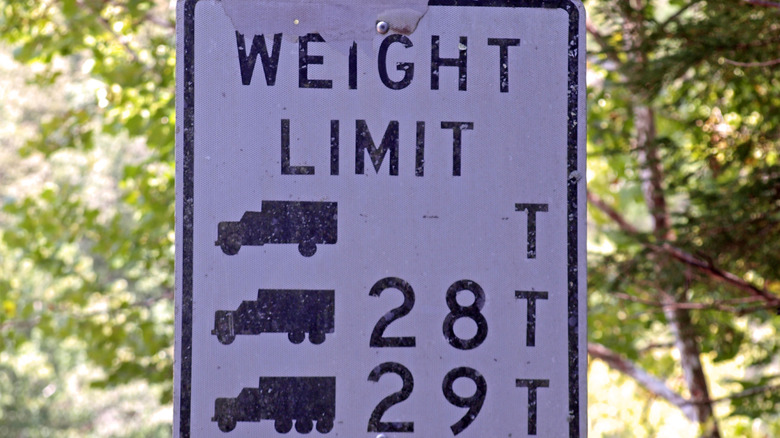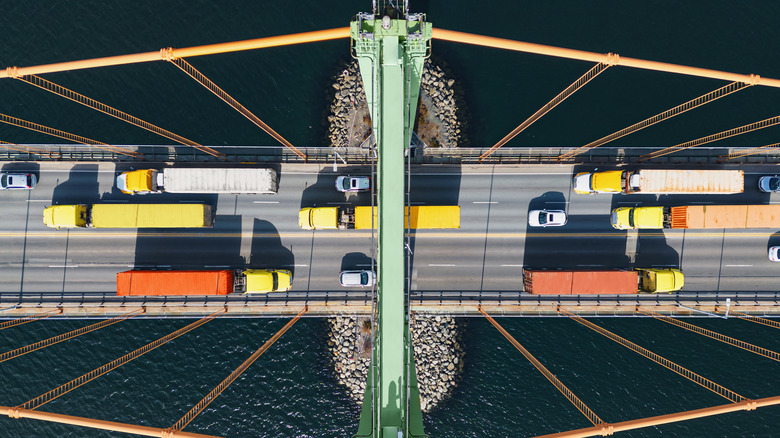Why Do Some Roads Have Weight Limits?
The global transportation network has never been busier, driven in part by the rapid rise of e-commerce. With online shopping becoming a mania among consumers in recent years, goods are regularly transported at unprecedented levels. The U.S. freight system alone comprises roughly 12 million vehicles, including cars, trucks, and trains, all working to meet the demands of global trade. Among these, large freight trucks play a big role in transporting goods. However, the increasing size and weight of these vehicles pose challenges for roadways. Weight limits are put in place to address these challenges, to ensure public safety, and to preserve infrastructure.
According to a report by the U.S. Government Accountability Office, a single five-axle tractor-trailer loaded to the federal limit of 80,000 pounds causes as much damage to a highway as 9,600 automobiles. The cost of wear and tear, both financial and structural, underlines the importance of weight restrictions in maintaining our roadways.
Road weight limits are not arbitrary; they are carefully calculated to balance the demands of modern transportation with the need to protect public safety and infrastructure. While large freight trucks are vital to global trade, their impact on roadways is significant. Adhering to weight restrictions is a shared responsibility among drivers, businesses, and governing bodies. By doing so, roads and bridges remain safe, functional, and sustainable for years.
How road weight limits promote public safety
Large trucks, especially those carrying overweight loads, come with significant safety risks. In 2021, traffic accidents involving large trucks with a gross vehicle weight rating (GVWR) of over 10,000 pounds resulted in 5,788 fatalities, according to the National Highway Traffic Safety Administration (NHTSA). Around 72% of those killed were not occupants of the trucks but were in smaller vehicles.
The growing size and weight differentials between vehicles are an increasing concern. As cars become lighter and more fuel-efficient, the contrast with larger, heavier trucks increases the risk of severe accidents. Overweight trucks require much more space to brake safely. Thus, navigating winding or narrow roads becomes even more hazardous when these trucks are around. Municipalities often set load limits on certain roads, especially during specific seasons when road materials are more prone to damage — for example, during the spring thaw when asphalt and soil beneath are weakened by moisture.
Redirecting overweight vehicles to highways or designated routes helps reduce risks in areas with high pedestrian or bicycle traffic, such as residential neighborhoods, urban centers, and construction zones. These measures aim to prevent catastrophic crashes while keeping traffic flowing smoothly on roads designed to accommodate heavier loads.
How road weight mandates help preserve infrastructure and aesthetics
Weight limits aren't just about public safety; they're also crucial for minimizing wear and tear on roads and bridges. Overweight freight can accelerate the deterioration of roadways, leading to cracks, potholes, and other costly damage. While aesthetics are a factor, the financial impact of repairs is substantial. In a report (PDF), the U.S. Forest Service detailed that the cost to repair a damaged passenger road can range from $3,700 to $14,000 per mile, depending on the extent of the damage. These costs burden municipalities and taxpayers alike.
The relationship between truck weight and road damage is exponential. For instance, while a truck axle carrying 18,000 pounds is only nine times heavier than a 2,000-pound car axle, it inflicts 5,000 times more damage on the pavement. Bridges are also particularly vulnerable. Many were not designed to support modern truck weights, and with U.S. bridges having an average age of 44 years per the U.S. Department of Transportation, they face increasing stress from larger vehicles.
Weight-restricted bridges are marked with signage to indicate the maximum loads they can safely support. The Federal Bridge Formula Weights and National Bridge Inspection Standards indicate that any bridge unable to safely carry today's legal weight vehicles must be restricted to prevent damage and potential failure. Violations can lead to collapses or closures that endanger lives, disrupt transportation networks, and require extensive repairs.
Why comply with road weight limits
Among the 600,000 bridges in the U.S., only around 10% have weight restrictions. Compliance with the mandates helps ensure the long-term safety and functionality of the structures. Adherence also minimizes the risk of expensive repairs and accidents that can arise from infrastructure failure. However, road weight restrictions vary by state and, in some cases, by county. Truck drivers and companies have a responsibility to know and follow state and local regulations regarding weight limits.
To best comply with road weight limits, drivers should carefully plan their routes to avoid restricted areas before transporting overweight freight. Checking the gross weight of their vehicles, including cargo and trailers, is critical to ensure compliance. Consulting certified scale facilities and local guidelines can help mitigate risks and avoid violations. In cases where vehicles exceed weight limits, alternative solutions include reducing loads, taking alternative routes, or coordinating with local authorities for special accommodations.
Failure to comply with road weight restrictions can result in severe consequences, such as traffic violations, liability for infrastructure damage, and endangerment of public safety. For a better and easier route planning experience, drivers can use map apps designed for truck routes, such as Hammer and Trucker Path. Not only do they include information about truck-restricted roads and low bridges, but they also have features that check weight restrictions, trucking parking, and multi-day routes.



